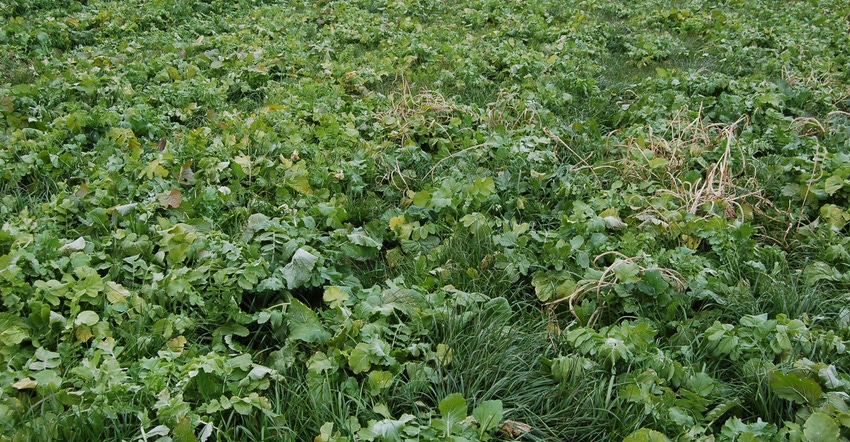January 7, 2020

It has been almost 40 years since I sat in a college soils class. Any discussion of the carbon-to-nitrogen ratio in the soil is still hard to get my head around. Even if your college experience is more recent, the concept could be challenging.
You may even say, why should I worry about it as I plan my 2020 planting season? If you’re a farmer using conventional tillage and not using cover crops, you may not need to lose much sleep over it. However, if you’re a no-tiller bringing cover crops into your management system, it’s time to brush up on the subject to head off potential issues.
The C-to-N ratio is just what it says: the relative amount of carbon, such as carbon in crop and cover crop residue, to nitrogen in the soil. This includes nitrogen from manure, commercial fertilizer and soil-available N. This is important in no-till systems and systems using cover crops.
Microbiology in the soil uses available nitrogen to help break down available carbon from residue, with the optimum ratio being around 24-to-1. To put it in simple terms, the bugs eat first! That’s why it’s recommended to apply 30 to 70 pounds of N per acre at planting in a no-till and cover crop system.
More details
If you’re planting a potentially high-carbon cover crop such as cereal rye, keep in mind that as the rye matures, the carbon level increases. When you terminate rye, available nitrogen in the soil will be used by microbiology to start breaking down the residue. That nitrogen then becomes unavailable for your cash crop, which can be an issue if you’re planting corn.
If you’re “planting green” or planting into standing, mature cereal rye, it’s important to realize the need for early nitrogen when planting corn. The ability to apply nitrogen with your planter and being ready to sidedress early are both important when planting corn into cover crop residue with a high carbon-to-nitrogen ratio.
On the other hand, soybeans seem to respond positively when the soil is in a nitrogen-starved environment early in the growing season. This is one reason farmers who try planting green for the first time start with soybeans.
When picking a cover crop, if your primary goal is erosion control or building soil organic matter, you will need to include high-carbon cover crops such as cereal rye in your mix. Brassicas such as daikon radish and legumes such as crimson clover are low in carbon and high in nitrogen. They will help moderate the C-to-N ratio in a mix with rye, but generally don’t build as much soil organic matter or provide as much erosion control when used without a high-carbon cover crop.
Using cover crops with the proper C-to-N ratio will build soil organic matter faster, get nutrient cycling working to produce nitrogen for your corn crop and help prevent possible issues such as lack of nitrogen at critical times.
Donovan is a district conservationist with the Natural Resources Conservation Service. He writes on behalf of the Indiana Conservation Partnership.
About the Author(s)
You May Also Like






